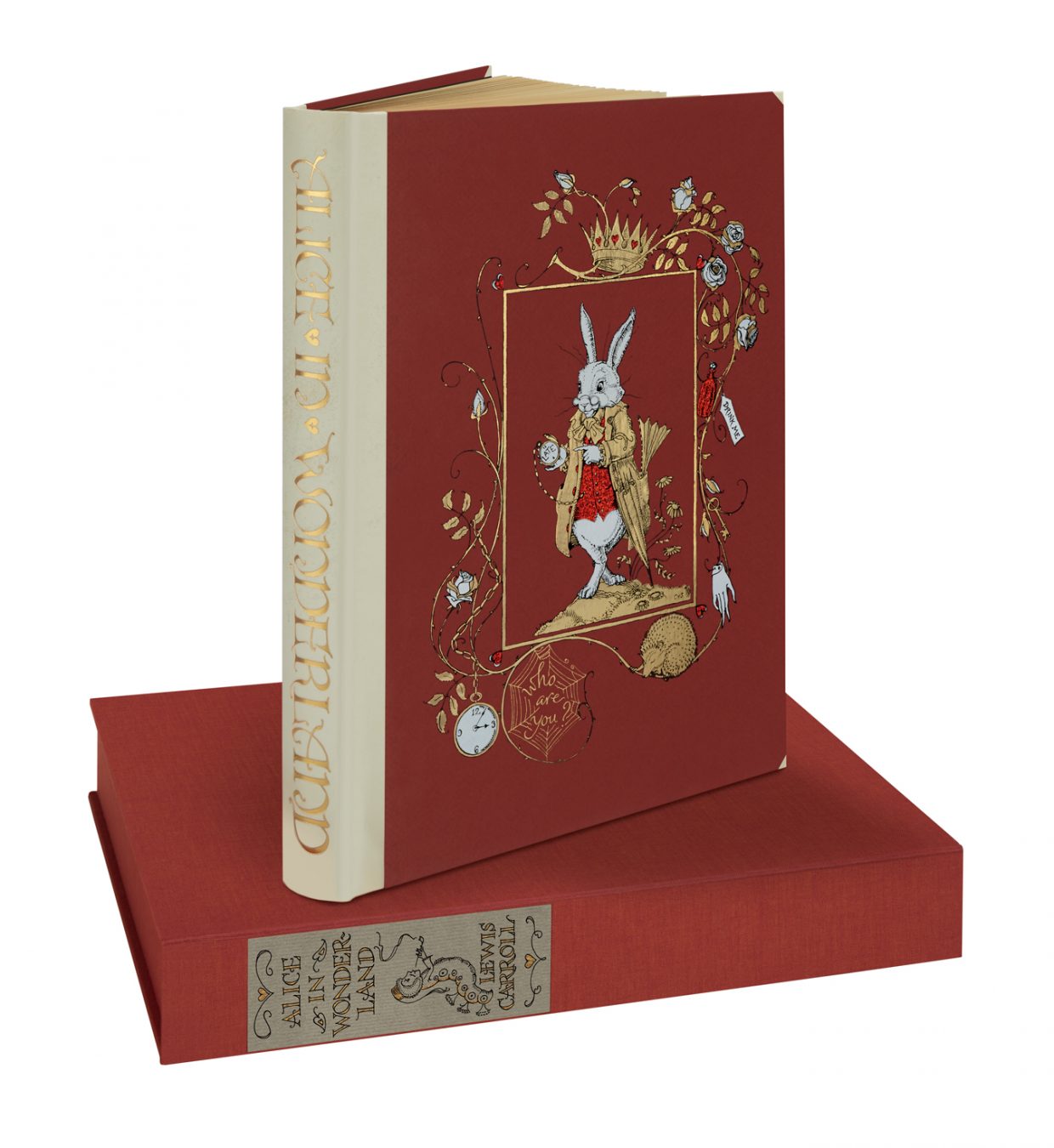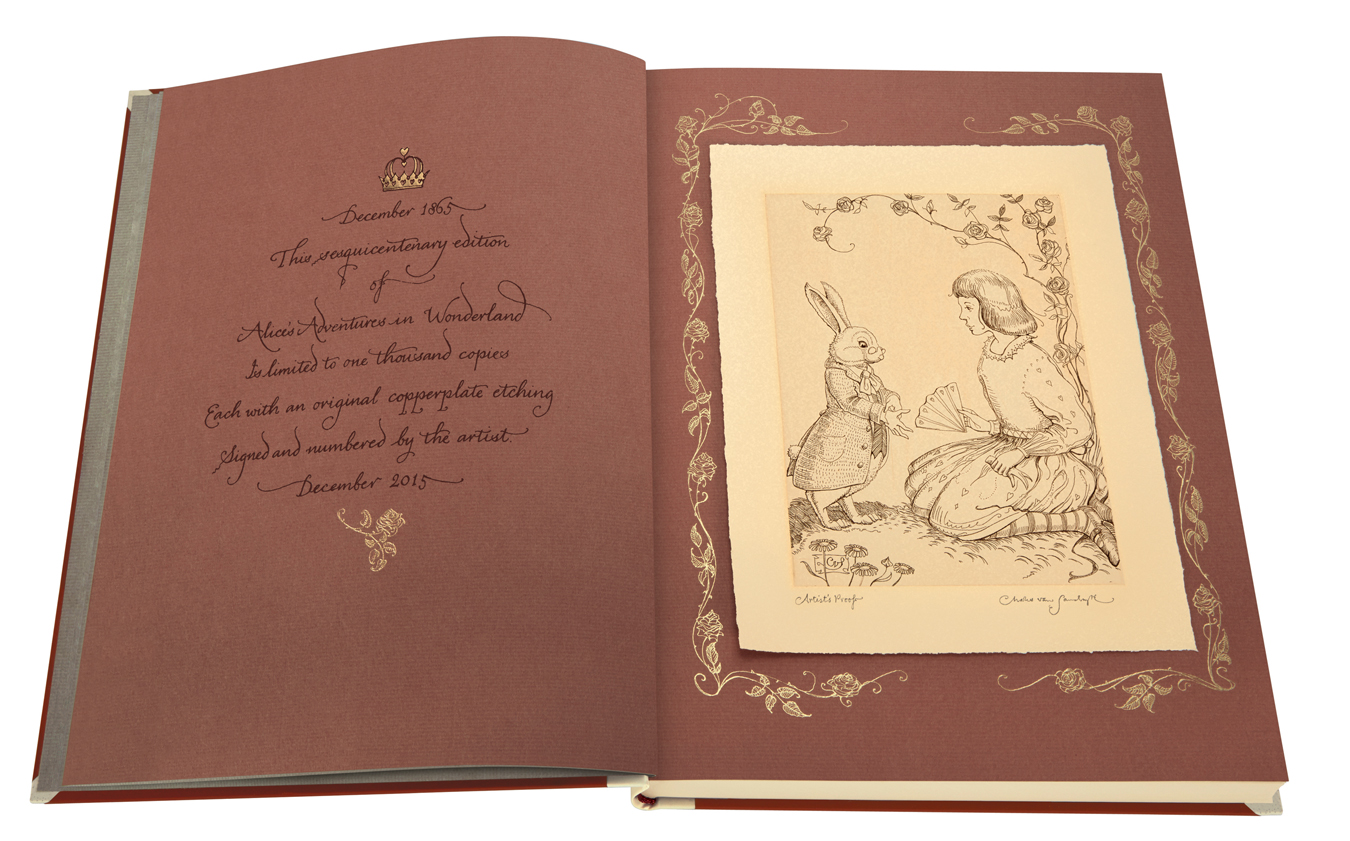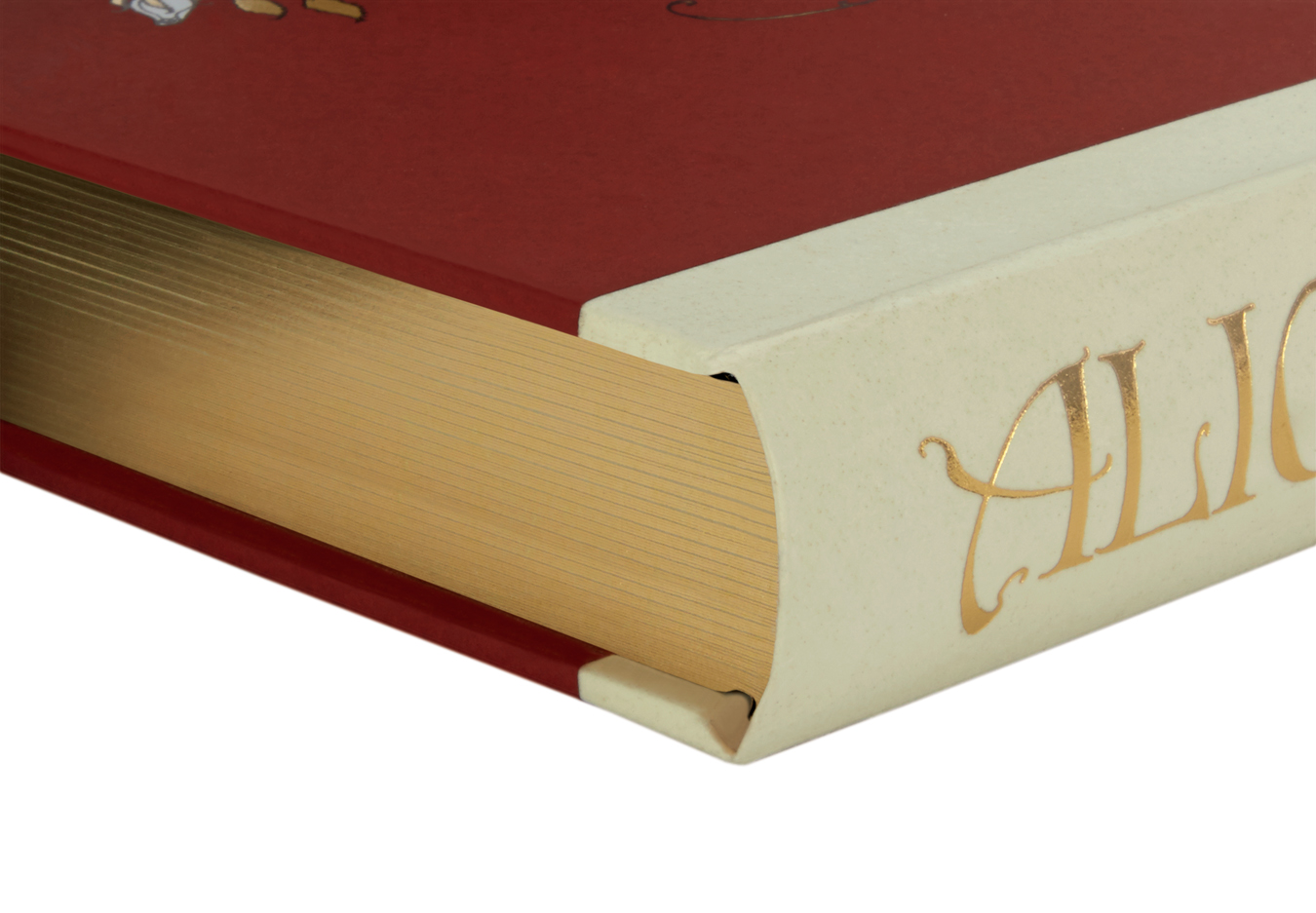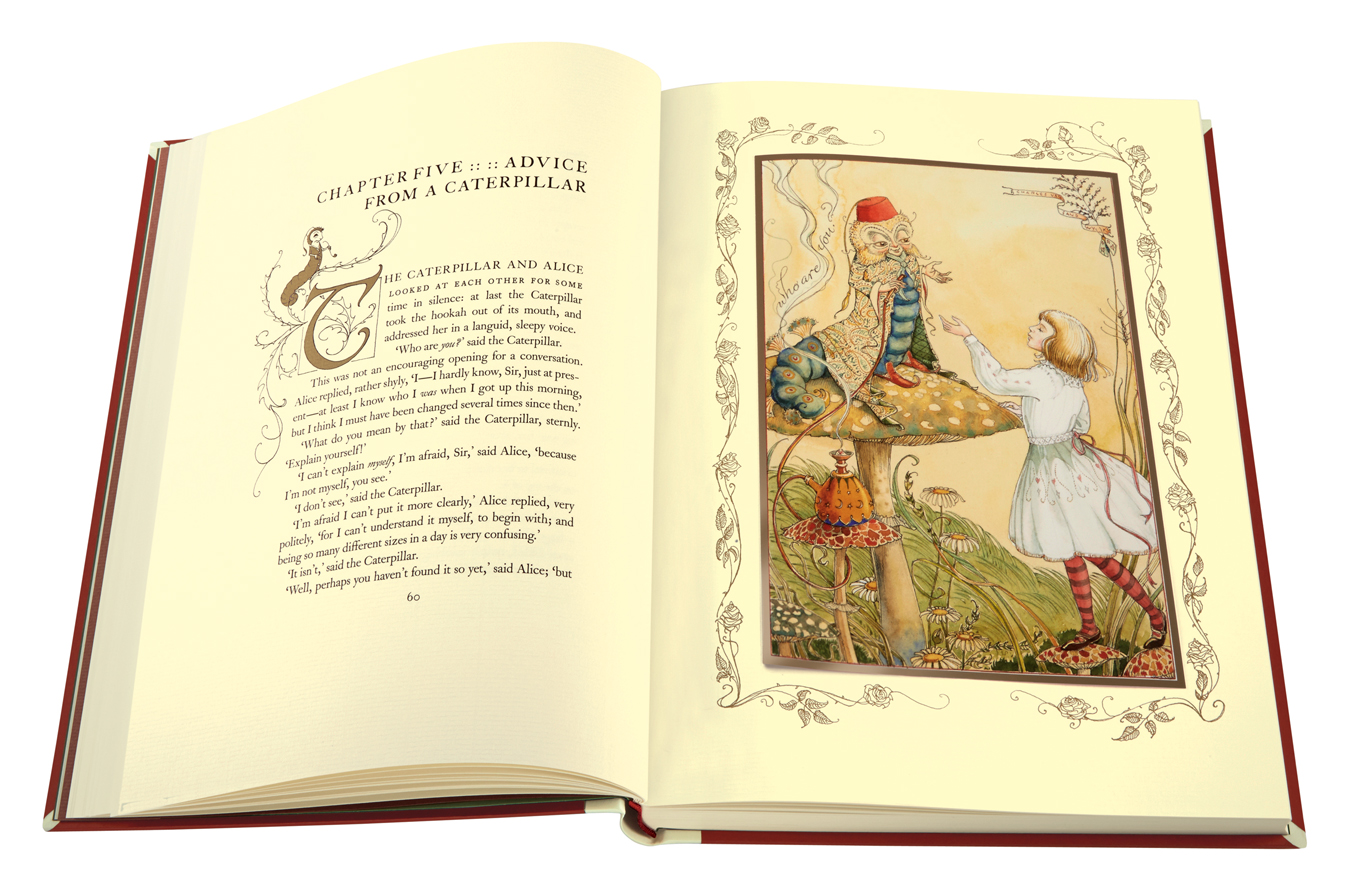“It took me a few attempts to capture my Alice,” says Charles van Sandwyk. For the past three years, the North Vancouver-based artist has been illustrating a deluxe limited edition of Lewis Carroll’s Alice in Wonderland for The Folio Society, released to mark the 150th anniversary of the first publication.
The Folio Society was established in London, U.K. in 1947 and is dedicated to releasing works of fiction and non-fiction in beautiful editions, often with elaborate illustrations. Alice is not the first book that van Sandwyk has prepared for the Society. In 2003, the Society released his illustrated edition of Andrew Lang’s The Blue Fairy Book and in 2008, his The Wind in the Willows by Kenneth Grahame. Van Sandwyk, who fell seriously ill after he completed The Wind in the Willows, sought a project that would restore him. When a different job fell through, van Sandwyk and the Society’s design and production editor, Joe Whitlock Blundell, settled on Alice—long a favourite of the artist’s.
Whitlock Blundell is not short on enthusiasm for van Sandwyk’s illustrations. When asked how this edition will differ from previous versions of Alice, he observed that “Charles is not trying to take on previous illustrators … but he adds so much charm, wit, and tenderness, which expands the dimensions of the story. Wonderland is an endlessly inventive place, and he takes an endlessly inventive approach to the illustrations.” Distilling the madcap nature of the story and creating an Alice who is at once new and familiar to readers was no easy task. When picturing his character, van Sandwyk started out with a Pre-Raphaelite beauty, who seemed too old to be the heroine. After a trip to Christ Church, Oxford, home to Alice Liddell, the inspiration for Carroll’s girl, van Sandwyk found her: one-part china doll, one-part Liddell, with a touch of impishness.
His illustration of Alice meeting the Caterpillar is among van Sandwyk’s favourite scenes, namely because it allowed him to “pull tenderness out of the story, developing a conversation between characters which was actually quite terse, while also trying to imbue the scene with sentimentality and playfulness.” Van Sandwyk has produced around 60 different books over the years, many of which are printed and bound by hand. His illustrations, many featuring animals that take on human characteristics, all appear very close to nature. In fact, van Sandwyk first sketches a caricature of the animal, and only then tries to sketch the animal from life. His historical style alludes to artists who have inspired him: Rembrandt, Dürer, Beatrix Potter, and Thomas Bewick.
Born in South Africa, van Sandwyk immigrated to North Vancouver at the age of 11. He still lives in the 100-year-old cottage he grew up in, and credits his beautiful surroundings as inspiration for his work. He loves what he does, which is a blessing, given that, in his words, “life is very short and death is very long.”
_________
Read more from our Arts section.













